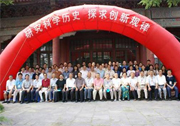| 英文摘要: |
Taixi Renshen Shuogai (Outline of Human Body in the Western Knowledge), translated and compiled by the Jesuit scholar Johann Schreck (1576~1630), is one of the most influential books concerning Western anatomy of the later Ming and early Qing period. It has been generally considered by most researchers, following a paper by Fan Xingzhun (1906~1998) in 1948, that the Chinese version was based on Gaspard Bauhin (1560~1624)’s Theatrum anatomicum. However, this paper points out that Fan’s arguments are illogical and that his generally-accepted conclusion is wrong - the problem of the master copy of Taixi Renshen Shuogai is not yet resolved. In addition, the author also discusses certain other background details, clarifies a few relevant issues, and obtains some new results in the field dealing with the interaction between China and the West during that period, especially concerning the topic of Western knowledge of the human body. |





